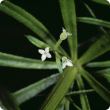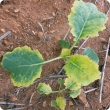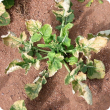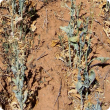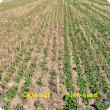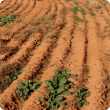Crops
The Department of Primary Industries and Regional Development continues to support the growth and international competitiveness of all crop industries in Western Australia.
With a 2400 kilometre span from its tropical north to its temperate south, WA supports a broad range of cropping industries from rain-fed winter cereals through to irrigated horticultural crops.
In the 2012/13 year the WA cropping industries exported a total of $3.9 billion which comprised: $3.1 billion of cereals, $859 million of pulses, pastures and oilseeds, $142 million of horticultural crops. The major contributors to these exports were wheat ($2.7 billion), canola ($756 million), barley ($377 million), lupins ($42 million), carrots at $48 million, oats ($12 million), and strawberries at $5.5 million.
Filter by search
Filter by topic
- Grains (202) Apply Grains filter
- (-) Remove Canola filter Canola
- Pests, weeds & diseases (109) Apply Pests, weeds & diseases filter
- Diseases (81) Apply Diseases filter
- Crop diseases (69) Apply Crop diseases filter
- Fungi (66) Apply Fungi filter
- Grains research & development (62) Apply Grains research & development filter
- Production & postharvest (53) Apply Production & postharvest filter
- Sowing (25) Apply Sowing filter
- Plant nutrition (22) Apply Plant nutrition filter
- Pests (22) Apply Pests filter
- Pest insects (18) Apply Pest insects filter
- Wheat (16) Apply Wheat filter
- Control methods (15) Apply Control methods filter
- Chemicals (14) Apply Chemicals filter
- Barley (14) Apply Barley filter
- Fertiliser (12) Apply Fertiliser filter
- Climate, land & water (12) Apply Climate, land & water filter
- Pulses (9) Apply Pulses filter
- Lupins (9) Apply Lupins filter
- Soils (8) Apply Soils filter
- Oats (8) Apply Oats filter
- Herbicides (7) Apply Herbicides filter
- Weeds (6) Apply Weeds filter
- Viruses & virus-like (6) Apply Viruses & virus-like filter
- Managing soils (6) Apply Managing soils filter
- Genetic modification (5) Apply Genetic modification filter
- Fungicides (5) Apply Fungicides filter
- Crop weeds (5) Apply Crop weeds filter
- Climate & weather (5) Apply Climate & weather filter
- Frost (4) Apply Frost filter
- Harvesting (3) Apply Harvesting filter
- Nematodes (2) Apply Nematodes filter
- Pastures (2) Apply Pastures filter
- Postharvest (2) Apply Postharvest filter
- Soil nutrients (2) Apply Soil nutrients filter
- Storage (2) Apply Storage filter
- Water repellence (2) Apply Water repellence filter
- Investment attraction (2) Apply Investment attraction filter
- Mechanical, physical and cultural (2) Apply Mechanical, physical and cultural filter
- Breeding & varieties (2) Apply Breeding & varieties filter
- Grains Research & Development (2) Apply Grains Research & Development filter
- Food, export & investment (2) Apply Food, export & investment filter
- Horticulture (2) Apply Horticulture filter
- Irrigated crops (2) Apply Irrigated crops filter
- Broccoli (1) Apply Broccoli filter
- Biosecurity & quarantine (1) Apply Biosecurity & quarantine filter
- Bacteria (1) Apply Bacteria filter
- Biosecurity (1) Apply Biosecurity filter






